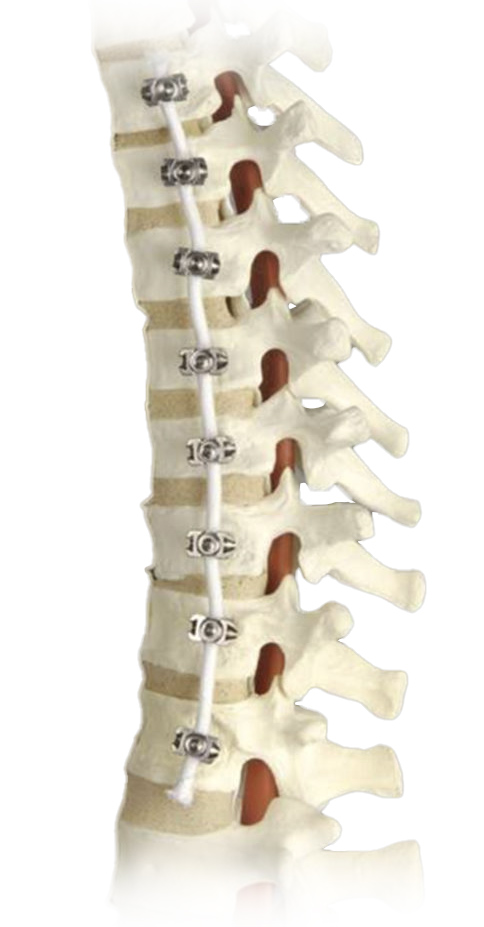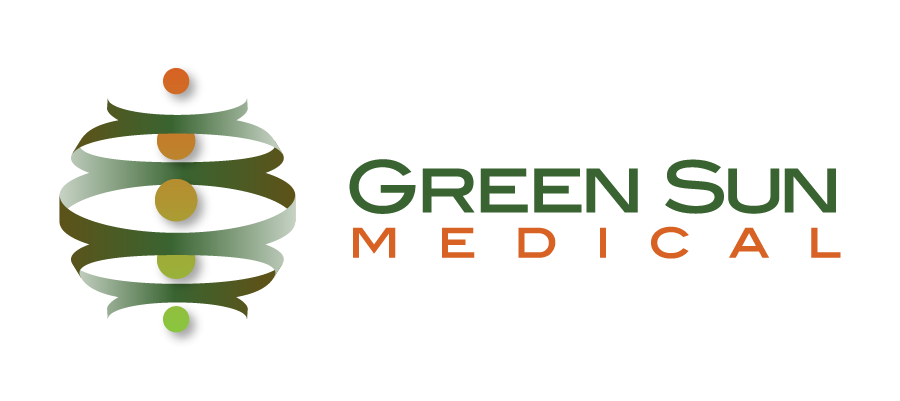Adolescent Idiopathic Scoliosis Surgery
Adolescent Scoliosis Surgery Overview
While non-surgical options for treating scoliosis are obviously preferred, once curves progress to around 45-50°, surgery becomes the best option. Fortunately, patients and their families have some choices to consider these days as they move forward with the best scoliosis correction surgery options for their unique needs.
Vertebral Body Tethering (VBT)
A promising surgical option that has gained traction over the past ten years is vertebral body tethering (VBT). Zimmer Biomet has been a leader in this area. In the past, surgery involved spinal fusion, which could severely limit the movement of patients whose curvature had progressed to a point where surgery was warranted.
With VBT, a process called “growth modulation” is used to treat scoliosis in children who are still growing. Their own growth is used to help repair the curve. As Zimmer Biomet says: “The Tether is almost like an ‘internal brace’ for your spine. It puts pressure on the outside of the curve, allowing the inside of the curve to continue growing. This is what straightens out the spine.”
According to Zimmer Biomet website, the Tether is approved as a Humanitarian Device for patients with idiopathic scoliosis with a Cobb angle of 30-65 degrees. Patients should have failed bracing and/or be intolerant to brace wear. There is probable benefit of the device, but its efficacy is still unproven.

Spinal Fusion
For some patients, spinal fusion is still the best option for surgical scoliosis correction. Spinal fusion surgery is an option that is often able to improve the degree of the curve and other symptoms related to severe scoliosis. By stabilizing the spine, many people experience reduction in pain and improvement in other areas like organ function, lifestyle and confidence.
With spinal fusion, an orthopedic surgeon or neurosurgeon corrects a curve by using a combination of instruments and implantable devices such as rods, screws and hooks—and sometimes another material called bone graft. These implants are used to hold the spine in a stabilized, straighter position. Your surgeon will select the optimal materials to use, depending on numerous factors including age, severity of curve, rigidity of curve and underlying conditions.

Physicians Explain the Procedures
Dr. Derek Lee, a health and wellness doctor, has interviewed some of the world’s top scoliosis surgeons, driven to a large degree by his own son’s experiences with scoliosis. His goal: to provide reliable information to patients and their children to help them understand the options available to them so they can make informed choices.Dr. Peter Newton, a spine surgeon and Chief of Orthopedic Surgery at Rady Children’s Hospital in San Diego, shares his perspectives on VBT.
Dr. Noelle Larson, a pediatric spine surgeon at Mayo Clinic, discusses Apifix, VBT and fusion for adolescents with scoliosis.
Important Questions to Ask Your Surgeon
As you, and your child, consider your scoliosis correction surgery options, here are some questions you may want to consider asking your surgeon:
- What type of surgery will be performed?
- How long will I be in the hospital?
- What can I anticipate for recovery?
- What can be done for pain management?
- Will I need a brace after surgery?
- How many of these operations have you performed?
- Will I be able to resume normal activities with this surgery?
- What level of correction can I expect in my curve?
- What are the complication rates?
- When can I see my child afterwards?
- Can I stay with my child at the hospital?
- What will my scar look like?
- How do I care for the incision?
- What should my child bring to the hospital?
- What other doctors will be in the operating room?
Asking your surgeon questions before surgery is very important. It is best to find a surgeon who you feel that you can ask questions openly, discuss fears and worries and feel as though you are listened to. This communication is vital to a successful surgery and recovery.
